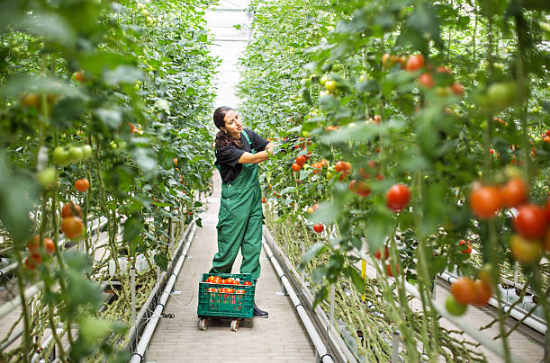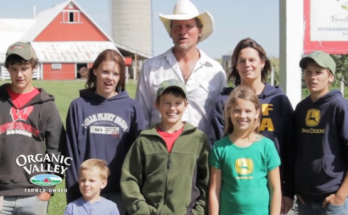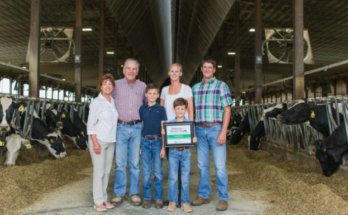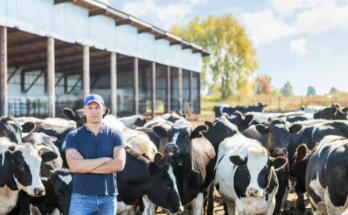The greenhouse complex Baku Agropark is located in Zira settlement in Baku that is famous for the most delicious tomatoes, and is located on an area of more than 20 hectares. Baku Agropark is one of the most modern and high-tech agricultural enterprises in the whole region. Greenhouses of the 4th generation of Baku Agropark equipped with modern intensive technologies allow growing several hundred tons of high-quality tomato crops monthly.

**Tomato Farming in Huge Greenhouses: Growing and Harvesting Process**
Tomatoes, one of the most popular crops in the world, are grown in large quantities in greenhouses, especially in regions with colder climates or where outdoor growing seasons are shorter. Greenhouse tomato farming has become a critical part of modern agriculture due to its efficiency in terms of water usage, space, and pest management. By creating a controlled environment, greenhouses allow tomatoes to be grown year-round, ensuring consistent production.
**How It Works: Growing Tomatoes in Greenhouses**
The process of growing tomatoes in a huge greenhouse begins with selecting the right variety of tomato that is well-suited to greenhouse conditions. These varieties are typically smaller and more compact, such as cherry or beefsteak tomatoes. Once the seeds or seedlings are planted in well-prepared soil or hydroponic systems, growers use controlled environments to optimize growth.
In a greenhouse, temperature, humidity, and light are carefully monitored and adjusted. The temperature is typically maintained between 70 to 80°F (21 to 27°C) during the day, with slightly cooler temperatures at night to encourage healthy growth. Greenhouses often employ artificial lighting systems to supplement natural sunlight, especially during winter months, ensuring that the plants receive enough light for photosynthesis. The use of high-efficiency LED lights can reduce energy consumption while maximizing plant growth.
Irrigation systems are also carefully managed. Many large greenhouse farms use hydroponic or drip irrigation systems that deliver water directly to the roots of the plants. This reduces water wastage and ensures that the plants receive consistent hydration. In hydroponic systems, the plants grow in a nutrient-rich water solution instead of soil, allowing for faster growth and higher yields.
**Harvesting Tomatoes in Greenhouses**
The harvesting process in greenhouse tomato farming is highly automated in many large operations. Automated systems, such as conveyor belts, sensors, and robotic arms, are used to monitor and pick ripe tomatoes. This reduces labor costs and increases harvesting efficiency. In smaller operations, however, harvesting is often done manually, with workers carefully plucking ripe tomatoes to avoid damage to the delicate fruit. Depending on the variety, tomatoes are typically ready for harvest within 60 to 90 days after planting.
Once harvested, tomatoes are packaged and prepared for distribution. Many greenhouse-grown tomatoes are sold to supermarkets or for processing into products like sauces, ketchup, and canned tomatoes. The controlled conditions of greenhouse farming also reduce the risk of pests and diseases, meaning fewer pesticides are required, leading to healthier, more sustainable crops.
**Budget, Spending, and Success in Tomato Greenhouse Farming**
Running a successful greenhouse tomato operation requires significant investment in infrastructure and technology. The costs of building a greenhouse, purchasing climate control systems, and setting up irrigation and lighting systems can be substantial. However, once the greenhouse is operational, it can produce high yields throughout the year, making it a profitable venture in the long term.
Governments often release spending budgets or financial support programs to help farmers, including greenhouse growers. These funds may be allocated to cover infrastructure costs, energy-efficient technologies, or environmental initiatives. The release dates for these budgets usually align with the fiscal year, ensuring that greenhouse operations can plan ahead for investment in necessary improvements or new technologies. Financial support for greenhouses helps farmers manage the upfront costs and invest in sustainable practices that improve crop yield and quality.
The success of greenhouse tomato farming also depends on continuous research and development to optimize growing techniques, improve crop resilience, and minimize environmental impact. For example, integrating vertical farming methods or precision agriculture technologies can further enhance productivity. Greenhouse-grown tomatoes are particularly popular in the U.S. and Europe due to their consistent quality and availability, ensuring that greenhouse farming continues to thrive as a major component of the agricultural sector.
**Resources for Farmers and Available Support**
Farmers involved in greenhouse tomato production can access various resources from governmental and private institutions. The U.S. Department of Agriculture (USDA) provides grants and loans for greenhouse construction, as well as technical support for integrating efficient irrigation systems and renewable energy solutions. Local agricultural extension offices often offer advice on crop management, pest control, and best practices for greenhouse farming. Additionally, private companies offer technological solutions, including automated harvesting systems and climate control software, which help farmers run more efficient and profitable operations. By leveraging these resources, farmers can optimize their greenhouses, improve their yields, and ensure long-term success in the competitive tomato market.



